What bubbles, pops and dances during every spring sunrise in Wyoming? Not much, one might think, as “spring” in Sublette County, Wyoming, often consists of 20-degree mornings with plenty of snow and wind to boot. The Greater Sage-Grouse, however, braves these elements as only the largest grouse in North America can, gathering in groups of up to 100-plus individuals at mating sites (called leks) across the state every spring morning to strut their stuff in the hopes of attracting a mate. Males perform a remarkable courtship display in which they inflate and release two yellow air sacs in their chest, creating a loud bubbling and popping sound.
Prime lek sites in Wyoming occur in sagebrush habitat, which can have a substantial amount of barbed wire fencing distributed throughout it. These fences often prove a deadly obstacle for Greater Sage-Grouse traveling to leks before dawn when visibility is poor. Additionally, in the springtime, Golden Eagles are abundant in Sublette County and will readily prey on grouse. An eagle passing over a lek site can panic the grouse, causing these fast-flying birds to accidentally hit the thin strands of barbed wire as they flee the predator.
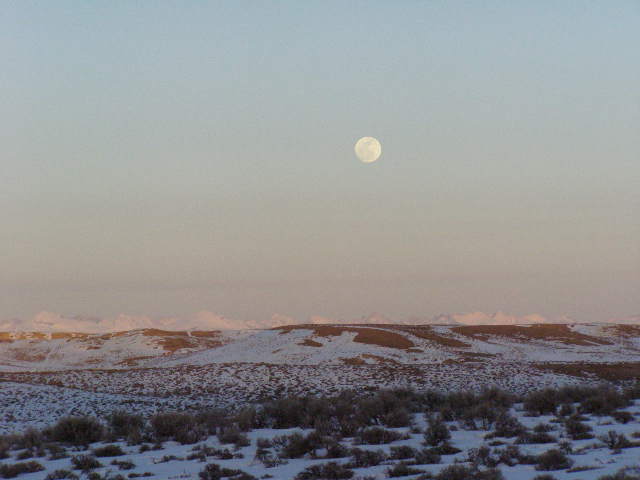
The moon is still visible over the sagebrush-covered foothills of Sublette County, Wyoming. Low visibility in the early-morning light makes it harder for grouse to spot the barbed wire fence common throughout the area. Photo by Taylor Gorman.
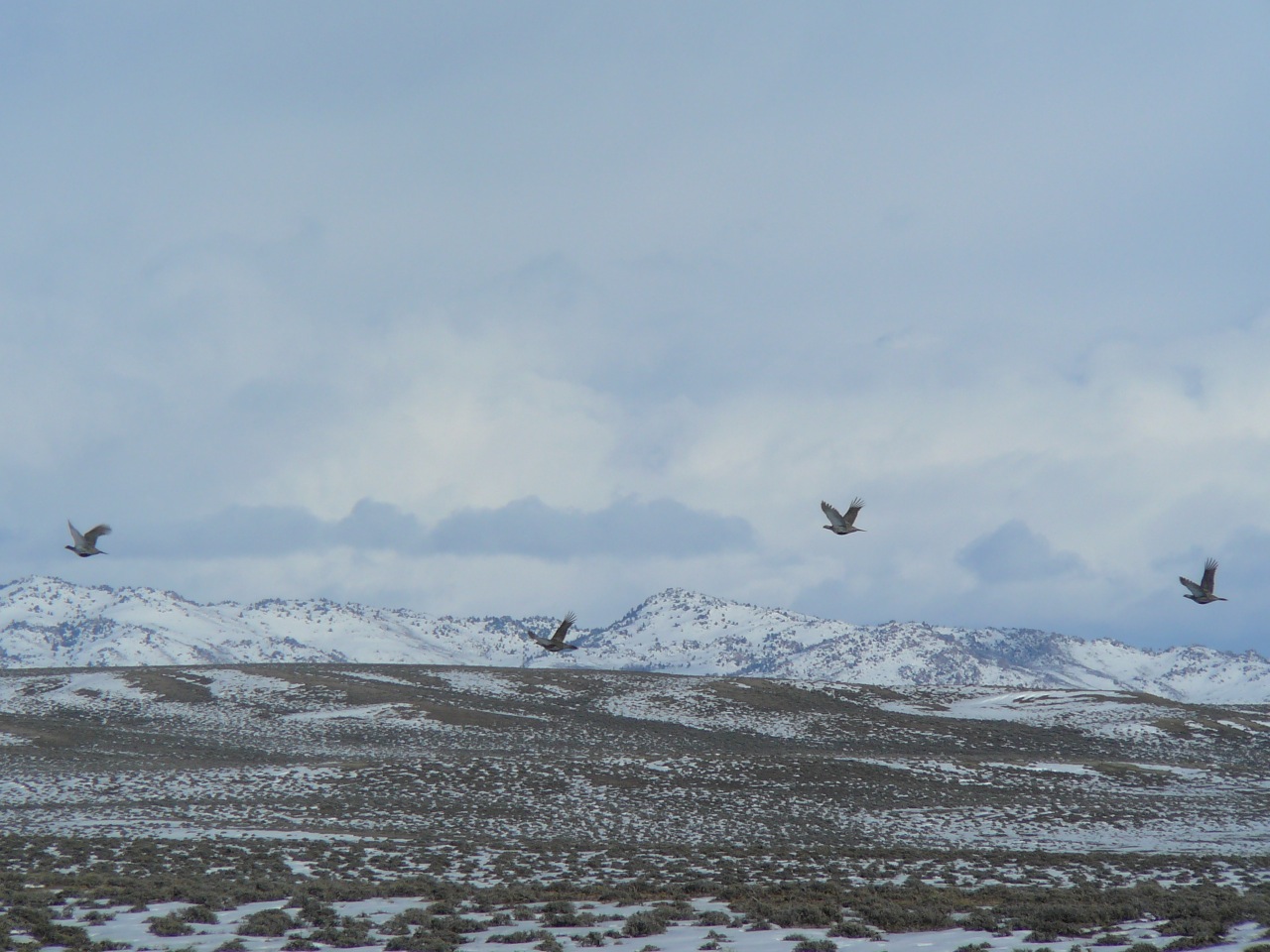
Greater Sage-Grouse take to the air after being flushed near a fence line. Photo by Angela Stemen.
The extent of Greater Sage-Grouse mortality due to collisions with barbed wire fencing is not yet fully understood. Although collisions with fencing are not thought to be the primary reason for decreasing Greater Sage-Grouse populations, recent studies and anecdotal observations suggest it may be a big problem. Fortunately, these collisions may be reduced with the help of fence markers.
Various markers have been developed that can be easily attached to fencing to make it more visible to Greater Sage-Grouse, helping them detect and avoid it during flight. Although it is a relatively new practice lacking long-term analysis, the preliminary results from such efforts are promising. An ongoing fence-marking study in Wyoming by Tom Christiansen, of Wyoming Game and Fish, is showing a 61% reduction in grouse mortalities along marked fences and a 70% reduction in overall avian fence collisions. Another fence-marking study in Idaho, led by Bryan Stevens of the University of Idaho, found an 83% reduction in sage-grouse fence collisions after marker installation.
Since last fall, Rocky Mountain Bird Observatory has been conducting its own study to test the effectiveness of different types of fence markers. To date, RMBO has marked approximately 24 miles of barbed wire fencing in Sublette County – a hot spot for Greater Sage-Grouse. RMBO is placing three different types of markers on the fences (plain white markers, white markers with green reflective tape and larger yellow markers). RMBO crews are regularly patrolling these 24 miles of marked fence and several unmarked “control” stretches through March and April to document all grouse collisions. Surveys will continue in March and April of 2015 to increase the sample size and help us evaluate the effectiveness of the three different markers compared to unmarked fencing.
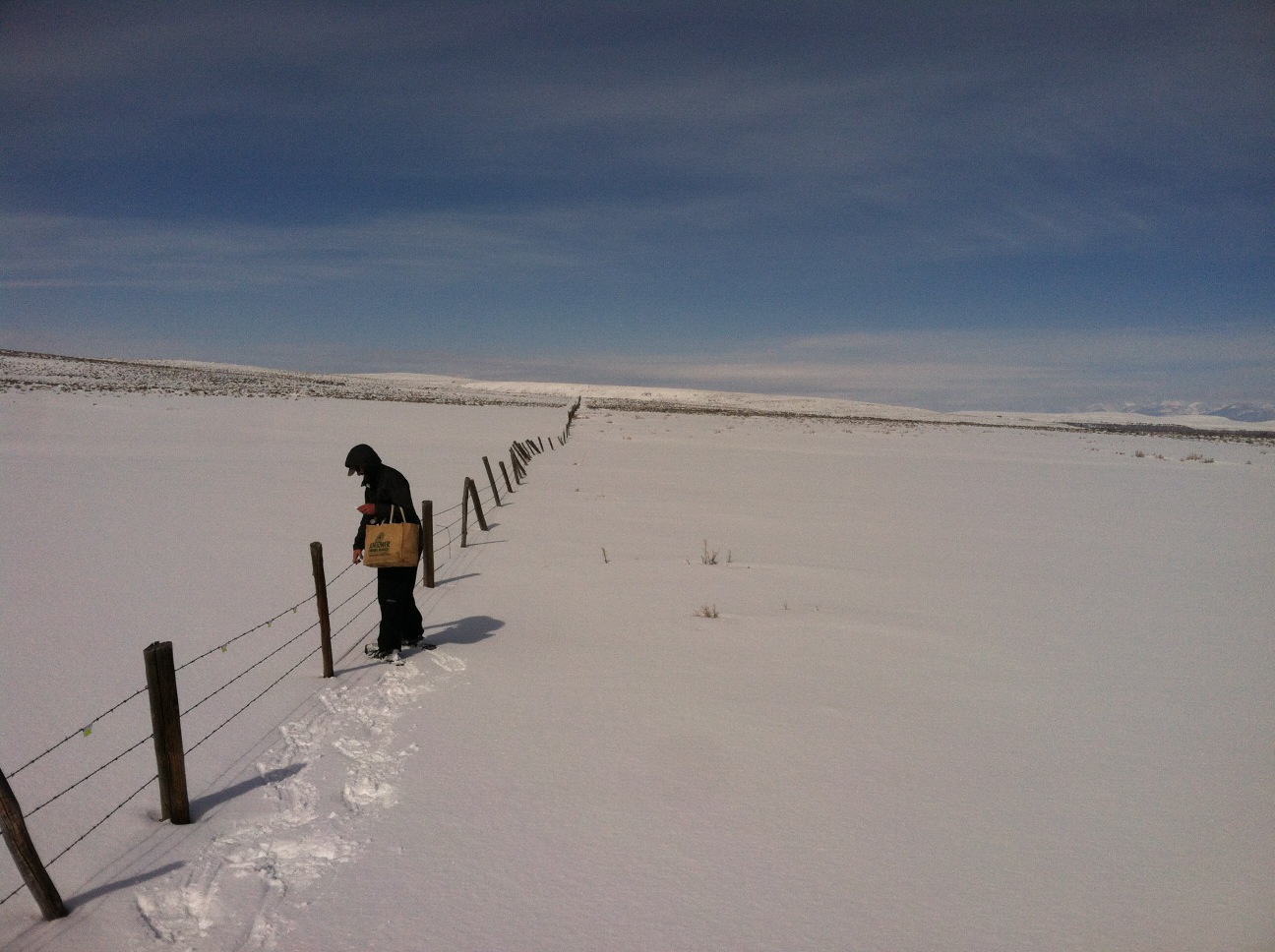
A technician with RMBO installs fence markers. Photo by Taylor Gorman.
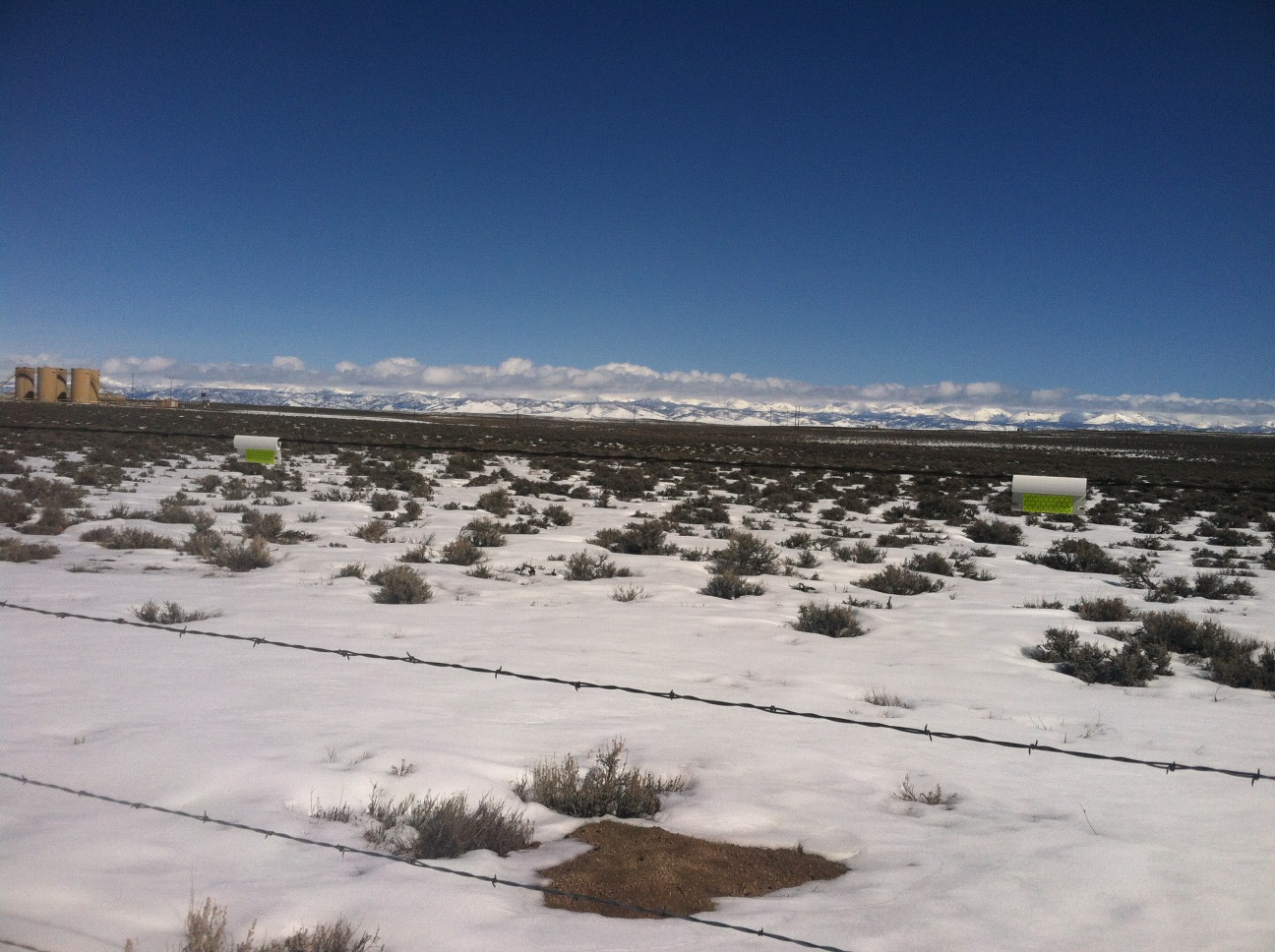
Reflective markers hang from a fence in Sublette County. Markers are placed about 3 feet apart along the top strand of barbed wire. Photo by Taylor Gorman.
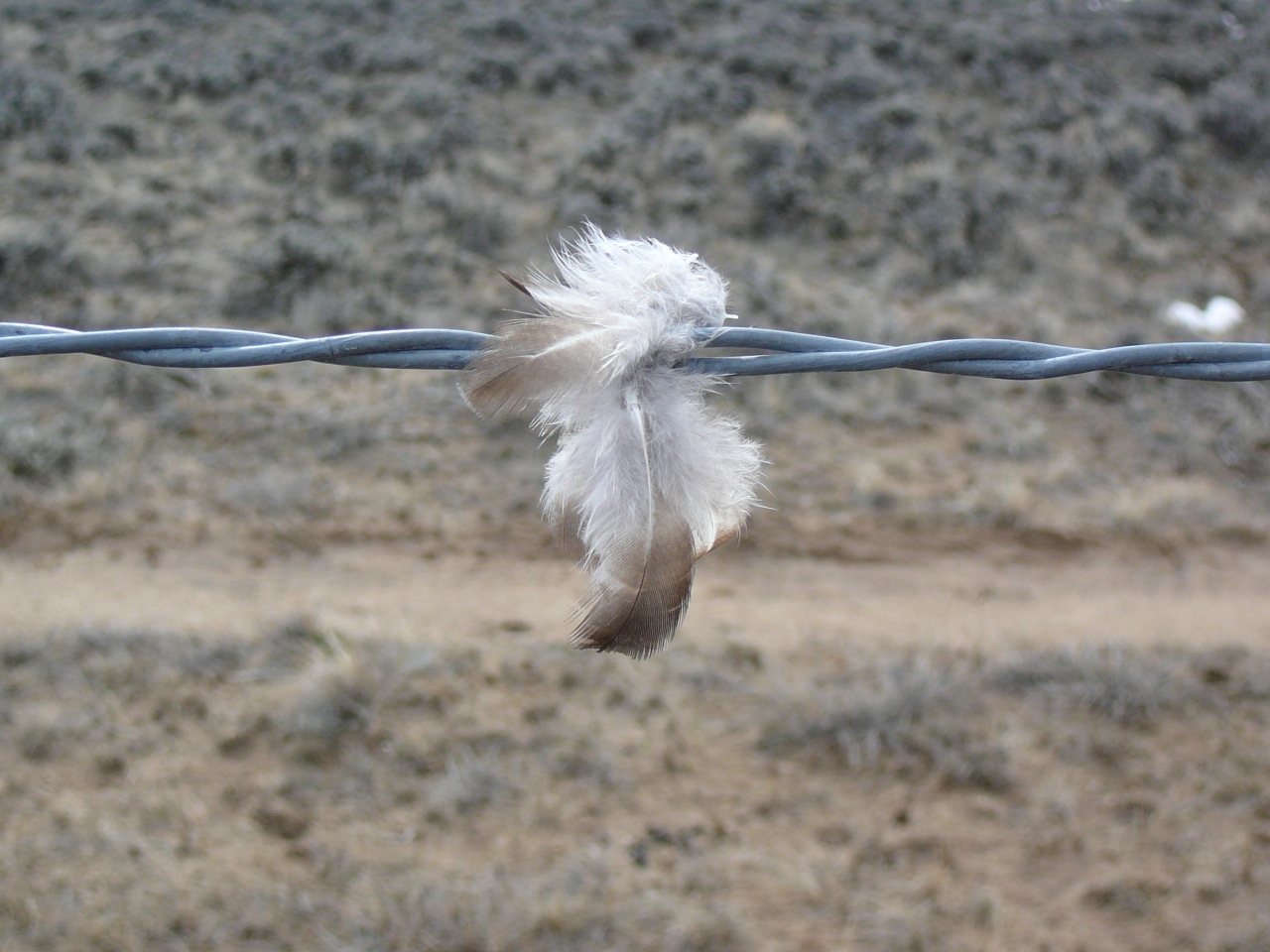
A Greater Sage-Grouse feather hangs from unmarked fence after a likely collision. Photo by Angela Stemen.
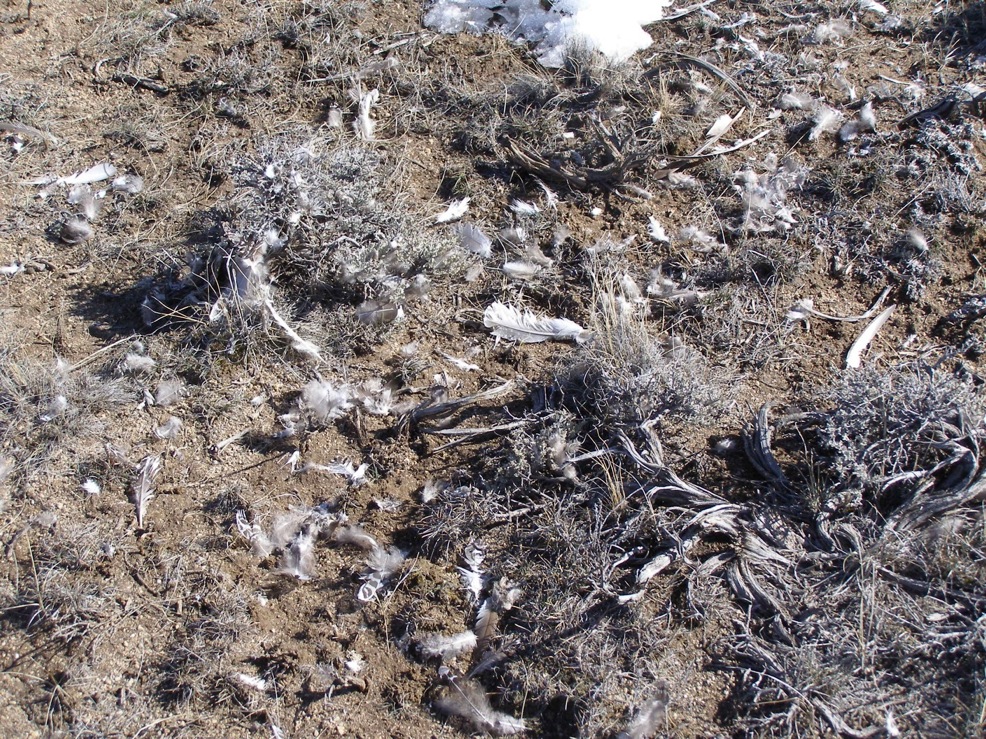
Predators and the Wyoming wind quickly scatter evidence of fence-induced mortality. RMBO will use statistical modeling to better estimate the persistence of collision evidence, providing more information on just how much mortality is happening in Sublette County. Photo by Angela Stemen.
Thank you to the Bureau of Land Management’s Pinedale field office and private landowners for allowing us to mark their fencing and the Natural Resources Conservation Service for providing the funds for this study. Through our work, we hope to ensure that the Greater Sage-Grouse will continue its spring dance for years to come. For more information, contact Nick Van Lanen at [email protected].
~ Taylor Gorman, Field Crew Leader, and Nick Van Lanen, Biologist


